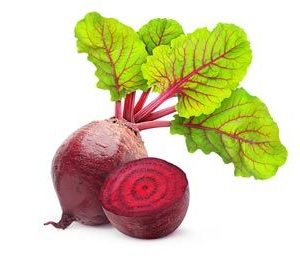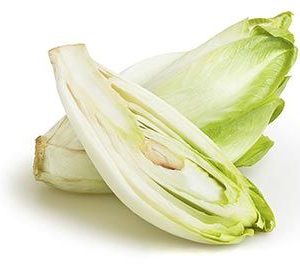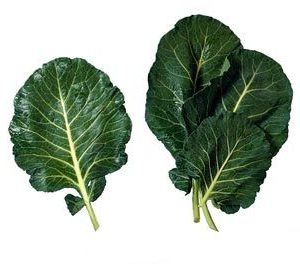The cabbage that we know today is very different from its Mediterranean ancestors, which look similar to kale and collard, as they do not form a head. Nowadays, cabbage has smooth and tightly bunched leaves that form a spherical head. Its colors vary as well, presenting pale and nearly white to deep green and red.
Despite the differences, all varieties are good for your health. Cabbage belongs to the Brassica family, which includes broccoli, radish, Brussels sprouts and cauliflower — vegetables that have good reputations as well.
Cabbage is best prepared as close to raw as possible — sometimes called tender-crisp — to help preserve its many nutrients. Coleslaw may be the most familiar cabbage preparation in American cuisine, as it has been part of it since 1770. This vegetable is also revered worldwide for the scrumptious flavor it lends to many kinds of hot soup.
Health Benefits of Cabbage
Just like other cruciferous vegetables, cabbage also contains powerful antioxidants, such as:
- Choline —This nutrient may help improve memory, reduce the risk of neural tube defects in babies and lower inflammation.
- Beta-carotene —One study shows that beta-carotene may help reduce damage in lymphocyte DNA caused by smoking cigarettes.
- Lutein —The European Journal of Nutrition notes that lutein may help reduce the risk of macular degeneration by reducing light and oxygen damage and ameliorating age-related cell and tissue deterioration in the eyes.
- Quercetin —This flavonoid may help fight bacteria, particularly strains resistant to antibiotics.
Cabbage is also rich in vitamin K, which is important not only for promoting bone health but also for lowering the risk of Alzheimer’s disease by limiting neuronal damage in the brain.
This vegetable contains vitamin C as well, an important nutrient for your brain health, immune system, blood pressure and mitochondrial function. Vitamin C may also help reduce the risk for obesity through different mechanisms of action, such as regulating your inflammatory response, inhibiting glucose metabolism and modulating adipocyte lipolysis, among others.
Cabbage is also an excellent source of dietary fiber, which is a substance crucial for a healthy digestive system. Dietary fiber passes through your digestive system mostly intact. As a result, it bulks and softens your stool, helping facilitate regular bowel movements.
Other nutrients in cabbage include vitamin B6, folate, manganese, thiamin (vitamin B1) and pantothenic acid (vitamin B5), as well as iron, magnesium, phosphorus, calcium and potassium. Check out the nutrition facts of cabbage below:
| Cabbage Nutrition Facts
Serving Size: 3.5 ounces (100 grams), green, raw |
||
| Amt. Per Serving |
% Daily Value* |
|
| Calories | 25 | |
| Total Fat | 0 g | |
| Saturated Fat | 0 g | |
| Trans Fat | ||
| Cholesterol | 0 mg | |
| Sodium | 18 mg | |
| Total Carbohydrates | 5.8 g | |
| Dietary Fiber | 2.5 g | |
| Sugar | 3.2 g | |
| Protein | 1.28 g | |
| Vitamin A5 µg | Vitamin C | 36.6 mg |
| Calcium40 mg | Iron | 0.47 mg |
Studies Done on Cabbage
An animal study published in the journal Arquivos de Gastroenterologia found that cabbage may be effective in managing stomach ulcers due to its phytonutrient content. The researchers concluded that the aqueous extract of cabbage may be just as efficient as commercialized drugs when it comes to managing ulcers, but it acts “in a non-harmful manner and, to the contrary, providing adequate conditions for the tissue recuperation.”
Cabbage also contains indole-3-carbinol, a plant hormone that may help slow the growth of cancer cells. In fact, regular consumption of cabbage has been shown to help lower the risk of stomach cancer. An article published in F1000 Research highlights some of the mechanisms of action behind the anticarcinogenic properties of indole-3-carbinol, including the induction autophagy and inhibition of tumor proliferation and metastasis.
How to Grow Good Cabbage
Growing your own cabbage is the best way to gain the benefits of this mighty vegetable. Not only will you have access to fresh leaves for meals, but you’ll also avoid ingesting toxic herbicides and pesticides used in conventionally grown vegetables.
Start by making sure your garden soil has a pH level above 6.8, is well-draining and rich in organic matter. When planting the cabbage seeds, space them 2 to 3 feet apart in a row. This will provide ample space for each cabbage to fully mature once they sprout. Maintenance requires constant watering so that the plants do not split. Cabbage can tolerate full light exposure, but grows best when it has some shade.
How to Pick Good Cabbage
Harvesting cabbage depends on the maturity of their heads. You’ll know it’s ready when the head is firm, no matter the size. Another thing to consider is the species you planted. Napa cabbage takes around 70 to 80 days to fully mature. The Early Jersey Wakefield, on the other hand, completely matures in 63 days only, while hybrid types can take anywhere from 71 to 88 days. Ask your seed supplier for your cabbage’s growing time for your reference.
To harvest, cut at the lowest point of the cabbage while leaving the outermost leaves attached to the stalk. This allows the stem to sprout a new cabbage, saving you time on growing entirely new crops. You may want to harvest before rainfall as well, as excess water can destroy the quality of the leaves.
Cabbage Fun Facts
Coleslaw, one of the most popular cabbage dishes around, has a history going back to ancient Rome when citizens prepared a mixture of the vegetable, along with egg, vinegar and spices. Fermented cabbage was also fed to the workers who built the Great Wall of China, along with a small serving of rice.
Summary
There’s plenty of proof that cabbage can benefit your health. It contains a variety of vitamins and minerals, as well as phytonutrients that may help manage stomach ulcers and lower the risk of cancers.
Aside from being healthy, cabbage is adaptable in various culinary applications. Chopped in cold salads for a delicious crunch, added to vegetable soups for a satisfying flavor or even juiced, cabbage is a food that can be utilized in many cuisines.







Reviews
There are no reviews yet.